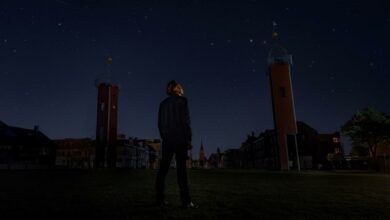Ambitious project probes the bowels of Panama’s Fort San Lorenzo

Panama City, Dec 20 (EFE).- Panamanian researchers are looking for the ruins of the bastions of one of the four construction phases of Fort San Lorenzo, a World Heritage Site since 1980 that played a key role in the Spanish crown’s defensive system for transatlantic trade.
This is just one of the goals of a “multidisciplinary and inter-institutional” project looking into the origins of the fortress, an example of military architecture from the 17th and 18th centuries, and the town of Chagres that existed in its vicinity, the project’s main researcher, Dr. Tomás Mendizábal, told EFE.
“It is a large, ambitious project” that involves “excavation in the moat, prospecting, oral memory, geophysics,” Mendizábal said, while the Panamanian expert Alexis Mojica carried out sweeps of the ground with an electrical conductivity scanner in an area of the fortress, located in the Caribbean province of Colón.
The San Lorenzo and Portobelo forts make up the Fortifications on the Caribbean Side of Panama, which have been on UNESCO’s World Heritage in Danger list since 2012. The Culture Ministry is executing a program with funds from the Inter-American Development Bank (IDB) to achieve the desired state of conservation.
Panama is working on the nomination as a Unesco World Heritage site for The Colonial Transisthmian Route of Panamá, which includes the Archaeological Site of Panama Viejo and the Historic District of Panama (World Heritage since 1997), the Fortifications of the Caribbean Coast of Panama, and the colonial roads that unite them: the Camino de Cruces and the Camino Real.
“As part of the nomination dossier” of the Route, “the results of this project” of San Lorenzo will be presented, with which Panama “demonstrates to Unesco that it is managing the site, that it is taking advantage of it for (… .) research” to produce “new knowledge and disseminate it,” said the archaeologist.
And all this is done with a “90 percent Panamanian team” and with funding from the National Strategic Plan for Science, Technology, and Innovation, added Mendizábal, who is a staff researcher at the Center for Historical, Anthropological and Cultural Research AIP (CIHAC).
The Culture Ministry, the Canal Museum, Colombia’s University of the North, the University of Panama, the Technological University of Panama, the Smithsonian Institute for Tropical Research, and the Board of Portabelo and San Lorenzo collaborate with this project, called “The Origins of the Castle of San Lorenzo and the Town of Chagres in the Panamanian Caribbean”.
A FORT RAZED BY ENEMIES AND REBUILT FOUR TIMES
The fortification, located on a cliff, now shows reinforcement and scaffolding as part of the conservation work. Due to its location, San Lorenzo was a strategic military asset, since following the nearby Chagres River and the Camino de Cruces one reached Panama City and the Pacific coast.
“This is the fourth version of the San Lorenzo castles that were built over time. The first was on the tip of the cliff but below, in the sea, which completely washed it away in the 17th century,” explained Mendizábal.
The second fortress “was made of wood and earth and was the one that was destroyed” by the privateer pirate Henry Morgan (1635-1688) “in 1671 when he attacked San Lorenzo on his way to Panama (which he plundered). Nothing remains of that one,” noted the expert.
“The third fortress, which is the one we are going to research, is the first masonry structure to be built on top of the cliff,” a work promoted by Antonio Fernández de Córdoba, Governor and Captain General of the Province of Tierra Firme and President of the Royal Audience of Panama between 1671 and 1673.
WHAT IS EXPECTED FROM THE RESEARCH IN SAN LORENZO
Mendizábal, a doctor from the Institute of Archaeology at the University of London, will be in charge of the excavation of the moat, which is scheduled to start in January.
“I want to find the remains of the bastions” of the fort, “which according to the plans were made of masonry. This must be well covered with stone and there must be very interesting ruins, one of the few of the military architecture of the 17th century that would remain in Panama,” he said.
The archaeologist also expects to “find the moat’s fill” and in it “the garbage that the soldiers surely threw there” which constitutes a kind of time capsule.
“That moat was dug in 1672-73, it was in use for 80-90 years, until this fort (the fourth) was built and it was covered (…) it will mainly be an X-ray of the 18th century (…) with luck, we will have a good image of the material culture that was used in San Lorenzo at the time,” he added.





